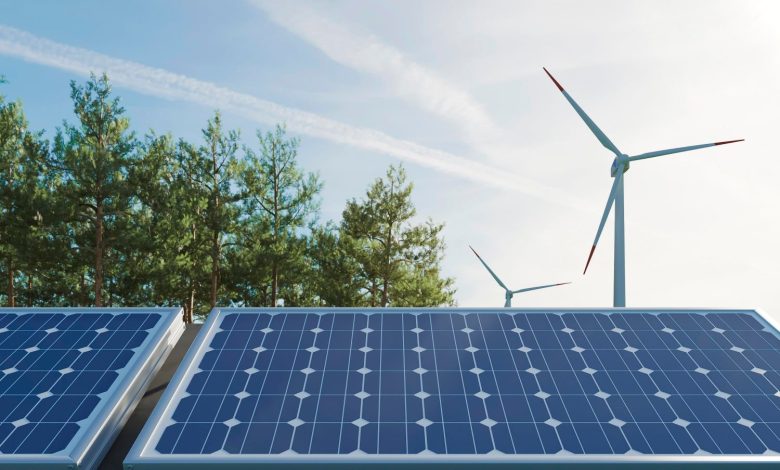Step-by-Step Guide to Investing in Renewable Energy Finance

As the world increasingly prioritizes sustainability, renewable energy has emerged as a crucial sector for both environmental stewardship and financial growth. Investing in renewable energy finance can offer significant returns while contributing to a greener future. This guide will walk you through the essential steps to successfully navigate and invest in this promising field.
Understanding Renewable Energy Finance
Before diving into the specifics of investing, it’s important to understand what renewable energy finance entails. This sector involves funding projects and companies focused on renewable energy sources such as solar, wind, hydroelectric, and geothermal power. The goal is to support the development and deployment of these technologies, reducing reliance on fossil fuels and mitigating climate change.
Step 1: Conduct Thorough Research
Market Overview
Begin by familiarizing yourself with the renewable energy market. This involves understanding the different types of renewable energy sources and their respective advantages and challenges. For instance, solar energy is abundant and increasingly cost-effective, but it requires significant space and sunlight. Wind energy is powerful and scalable but can be intermittent and location-dependent.
Industry Trends
Stay updated with the latest trends in renewable energy. Innovations such as advanced battery storage, smart grids, and enhanced photovoltaic cells are transforming the industry. Additionally, policy changes, government incentives, and international agreements like the Paris Agreement play a crucial role in shaping the market.
Step 2: Identify Investment Opportunities
Direct Investments in Projects
One way to invest is by directly funding renewable energy projects. This could involve financing the construction of solar farms, wind turbines, or hydroelectric plants. Direct investments can offer substantial returns, especially when projects are backed by long-term power purchase agreements (PPAs).
Investing in Renewable Energy Companies
Another approach is to invest in companies involved in the renewable energy sector. These can be manufacturers of solar panels, developers of wind farms, or firms specializing in energy storage solutions. Publicly traded companies provide an accessible entry point for investors, allowing you to buy shares and benefit from their growth.
Green Bonds
Green bonds are debt securities issued to fund environmentally friendly projects. By purchasing green bonds, you lend money to entities undertaking renewable energy initiatives. These bonds often come with tax incentives and can provide a stable income stream through interest payments.
Renewable Energy ETFs and Mutual Funds
Exchange-traded funds (ETFs) and mutual funds focused on renewable energy offer diversified exposure to the sector. These funds pool money from multiple investors to invest in a variety of renewable energy assets. They are managed by professionals and provide a way to mitigate risk through diversification.
Step 3: Assess Financial Performance
Analyzing Company Financials
When investing in renewable energy companies, carefully analyze their financial statements. Look at revenue growth, profit margins, debt levels, and cash flow. Companies with strong financials are better positioned to withstand market fluctuations and invest in future growth.
Project Financial Viability
For direct project investments, assess the financial viability of the project. This involves evaluating the cost of development, expected revenue from energy sales, and potential risks. Projects with secure PPAs and government support are generally more financially stable.
Step 4: Evaluate Risks
Market and Regulatory Risks
Renewable energy investments are subject to market and regulatory risks. Market risks include fluctuations in energy prices and competition from traditional energy sources. Regulatory risks involve changes in government policies, subsidies, and incentives that can impact project viability and profitability.
Technological Risks
The renewable energy sector is driven by technological advancements. While this can lead to significant improvements and cost reductions, it also poses risks. New technologies might render existing ones obsolete, or projects might face delays and cost overruns due to technical challenges.
Environmental and Social Risks
Renewable energy projects can have environmental and social impacts. For instance, wind farms might affect local wildlife, and large-scale solar farms could displace communities. Assessing these risks is crucial for ensuring sustainable and socially responsible investments.
NEXT POST: Understanding the Basics of Life Insurance: A Beginner’s Guide
Step 5: Diversify Your Portfolio
Diversification is key to managing risk in renewable energy finance. Spread your investments across different types of renewable energy sources, geographic regions, and investment vehicles (e.g., stocks, bonds, and direct projects). This approach helps mitigate the impact of any single investment underperforming.
Step 6: Monitor and Adjust
Regular Performance Reviews
Continuously monitor the performance of your renewable energy investments. This includes tracking financial metrics, market trends, and regulatory changes. Regular reviews enable you to make informed decisions and adjust your investment strategy as needed.
Stay Informed
Stay informed about developments in the renewable energy sector. Follow industry news, attend conferences, and network with other investors. Being well-informed helps you identify new opportunities and anticipate challenges.
Step 7: Consider Professional Advice
If you’re new to investing or unsure about your investment decisions, consider seeking professional advice. Financial advisors and investment managers specializing in renewable energy can provide valuable insights and help you develop a robust investment strategy.
The Future of Renewable Energy Investment
Emerging Technologies
Emerging technologies such as floating solar farms, wave energy, and advanced battery storage systems are set to revolutionize the renewable energy landscape. Investing in these innovative technologies can offer substantial returns as they become commercially viable.
Increased Institutional Investment
Institutional investors, including pension funds and insurance companies, are increasingly allocating capital to renewable energy projects. This influx of investment is expected to drive further growth and development in the sector.
Global Expansion
The renewable energy market is expanding globally, with significant growth potential in emerging markets. Countries in Asia, Africa, and Latin America are investing in renewable energy to meet their growing energy needs and reduce carbon emissions. Investing in these regions can offer high-growth opportunities.
Conclusion
Investing in renewable energy finance is not only a financially sound decision but also a way to contribute to a sustainable future. By following this step-by-step guide, you can navigate the complexities of the renewable energy market and make informed investment decisions. Whether you choose to invest directly in projects, purchase shares in renewable energy companies, or buy green bonds and ETFs, the renewable energy sector offers diverse opportunities for growth and impact.
Key Takeaways
- Research is Crucial: Thoroughly understand the renewable energy market, industry trends, and the different types of renewable energy sources.
- Identify Opportunities: Explore various investment options such as direct project investments, company stocks, green bonds, and ETFs.
- Assess Financial Performance: Analyze the financial health of companies and the viability of projects.
- Evaluate Risks: Be aware of market, regulatory, technological, environmental, and social risks associated with renewable energy investments.
- Diversify Your Portfolio: Spread your investments across different sectors and regions to mitigate risk.
- Monitor and Adjust: Regularly review your investments and stay informed about industry developments.
- Seek Professional Advice: Consider consulting with financial advisors specializing in renewable energy to enhance your investment strategy.
By following these steps, you can position yourself to capitalize on the growing renewable energy sector, achieve financial returns, and contribute to a sustainable future.


